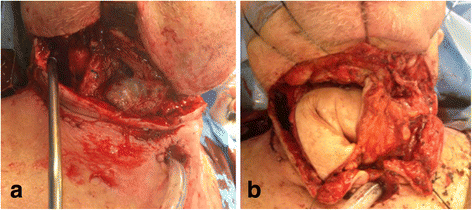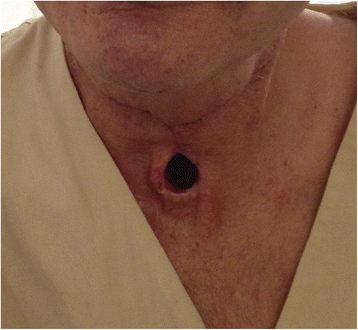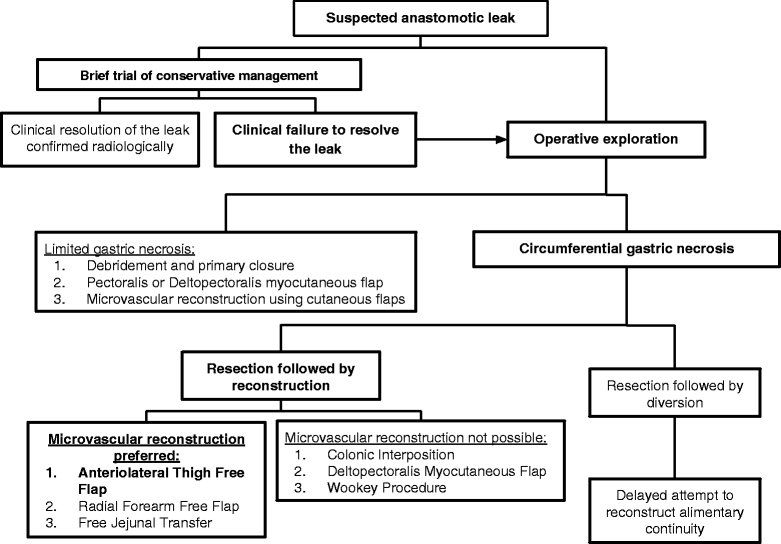Management algorithm for failed gastric pull up reconstruction of laryngopharyngectomy defects: case report and review of the literature
- PMID: 27449235
- PMCID: PMC4957331
- DOI: 10.1186/s40463-016-0153-3
Management algorithm for failed gastric pull up reconstruction of laryngopharyngectomy defects: case report and review of the literature
Abstract
Background: Gastric pull up remains a popular reconstructive option for pharyngoesophagectomy defects extending to thoracic inlet. Gastric necrosis is a dreaded complication of gastric pull up reconstruction and few studies report on management of this complication. MEDLINE, EMBASE, and Web of Science™ databases were searched for publications in the last 25 years on gastric pull up reconstruction following pharyngoesophagectomy. The rates of complications related to gastropharyngeal anastomosis were extracted, and methods of managing gastric necrosis were noted. Forty seven case series were identified reporting on the use of gastric pull up for reconstruction of pharyngoesophageal defects. Mortality rate varied from 0 to 33 % with a weighted average of 8.6 %. In 39 % of patients, mortality was either caused or directly related to failure of the gastropharyngeal anastomosis. The reported rate of gastric necrosis ranged from 0 to 24 % resulting in a 28 % mortality. Options for managing gastric necrosis included: temporary cervical diversion, free jejunum flap, colonic interposition, tubed radial forearm flap, deltopectoralis and pectoralis myocutaneous flaps.
Case presentation: We present the first case of an anterolateral thigh flap rescue of gastric necrosis after gastric pull up reconstruction. The case report is followed by a review of literature on management of gastric pull up failures.
Conclusion: Based on the extracted information, we propose an algorithm for managing gastric pull up failure following pharyngoesophageal reconstruction.
Keywords: Anterolateral thigh; Gastric pull up; Head and neck cancer; Head and neck reconstruction; Pharyngoesophagectomy.
Figures




References
-
- El-Naqeeb N, Behbehani A, Dashti H, Ahmed J, Mobarek AL, Muhanna AH. Postcricoid carcinoma: Results after visceral transposition and pattern of recurrence in 27 patients. Med Princ Pract. 1990;2:3–4. doi: 10.1159/000157353. - DOI
Publication types
MeSH terms
LinkOut - more resources
Full Text Sources
Other Literature Sources
Medical

